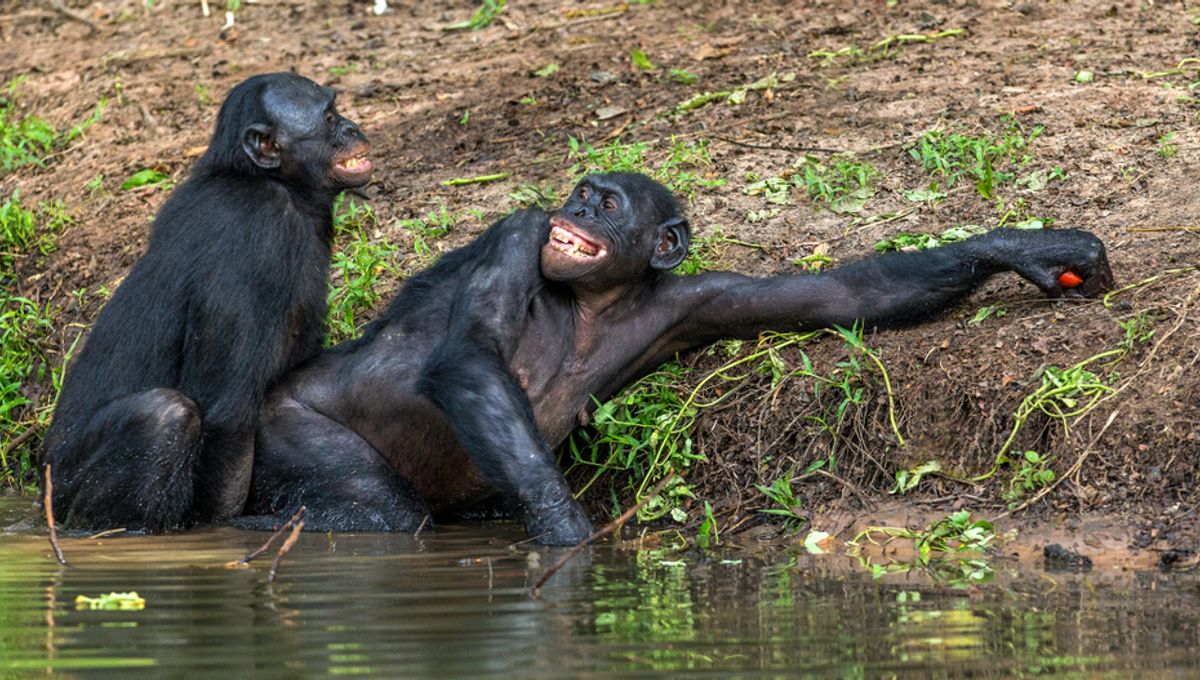
Same-sex behavior is sometimes said to be an “evolutionary conundrum” since it doesn’t appear to directly help with the reproduction of genes and the survival of species, at least on the surface. However, in a new study, scientists demonstrate how same-sex sexual behavior has evolved independently multiple times across hundreds of different animal species and likely plays an invaluable role in forging complex social relationships.
Ecologists from the Estación Experimental de Zonas Áridas and the University of Granada in Spain found that same-sex sexual behaviors have been reported in over 1,500 animal species so far.
As per their count, it’s most common in mammals, in which the behavior has been recorded in about 5 percent of the species. It’s especially prominent in primates where it has been observed in at least 51 species, including lemurs, all manner of monkeys, and great apes.
One of the most in-your-face examples of same-sex behavior is seen among bonobos, the “sibling species” of the chimpanzee. Notoriously sex-mad, this species of great ape will engage in sexual acts throughout the day and appear to use it as a way to build bonds with one another. It’s no exaggeration to say that their group dynamics are practically built around sex.
This is not limited to heterosexual behavior. Researchers have previously noted that practically all bonobo individuals will flirt with same-sex behavior from time to time. Female bonobos are often seen enjoying mutual genital-rubbing behavior, while males have been reported to engage in oral sex with other males and are often observed humping each other.
This kind of same-sex behavior seems to play an important social function in many mammals, the researchers argue. Along with maintaining strong social relationships, it also eases intrasexual tension, reducing the risk of aggression and conflict between competing males.
Along with bonobos, the researchers believe same-sex behaviors also help to secure social relationships in a similar fashion among groups of chimpanzees, bighorn sheep, lions, wolves, and several species of wild goats.
This positive impact of same-sex behavior perhaps explains why it has evolved so many times independently and may be an example of convergent evolution.
“These repeated evolutionary transitions to the same character state are an indication of convergent evolution. Although convergence may occur from random evolution, convergence that is associated with similar selective environments is considered strong evidence of adaptive evolution caused by the operation of natural selection,” the study authors write.
It isn’t just mammals that dabble in same-sex behavior either. The study notes that it has also been reported in fish, amphibians, reptiles, and birds, as well as all main groups of invertebrates, including insects, spiders, echinoderms, and nematodes. The explanation for same-sex sexual behavior among these animals, however, is less clear.
The study authors concede that their explanations for same-sex behavior are just a hypothesis and other explanations may remain out there.
As another caveat, the researchers were keen to stress that we should be extremely cautious about drawing any similarities between the same-sex behavior of non-human animals and the evolution of sexual orientation in humans. The case studies in this research were simply short-term courtship or brief mating interactions, as opposed to permanent sexual preferences, so it would be reductive to draw many (if any) comparisons.
They also raise the point that same-sex behavior in animals is still understudied and underappreciated, no doubt due to old dogma and prejudice. The more we study these interactions with an open mind, the more examples of same-sex behavior we’re likely to come across – and the more refined the explanations will become.
The study is published in the journal Nature Communications.
Source Link: Same-Sex Behavior Is Everywhere In Nature. Does It Have Evolutionary Benefits?